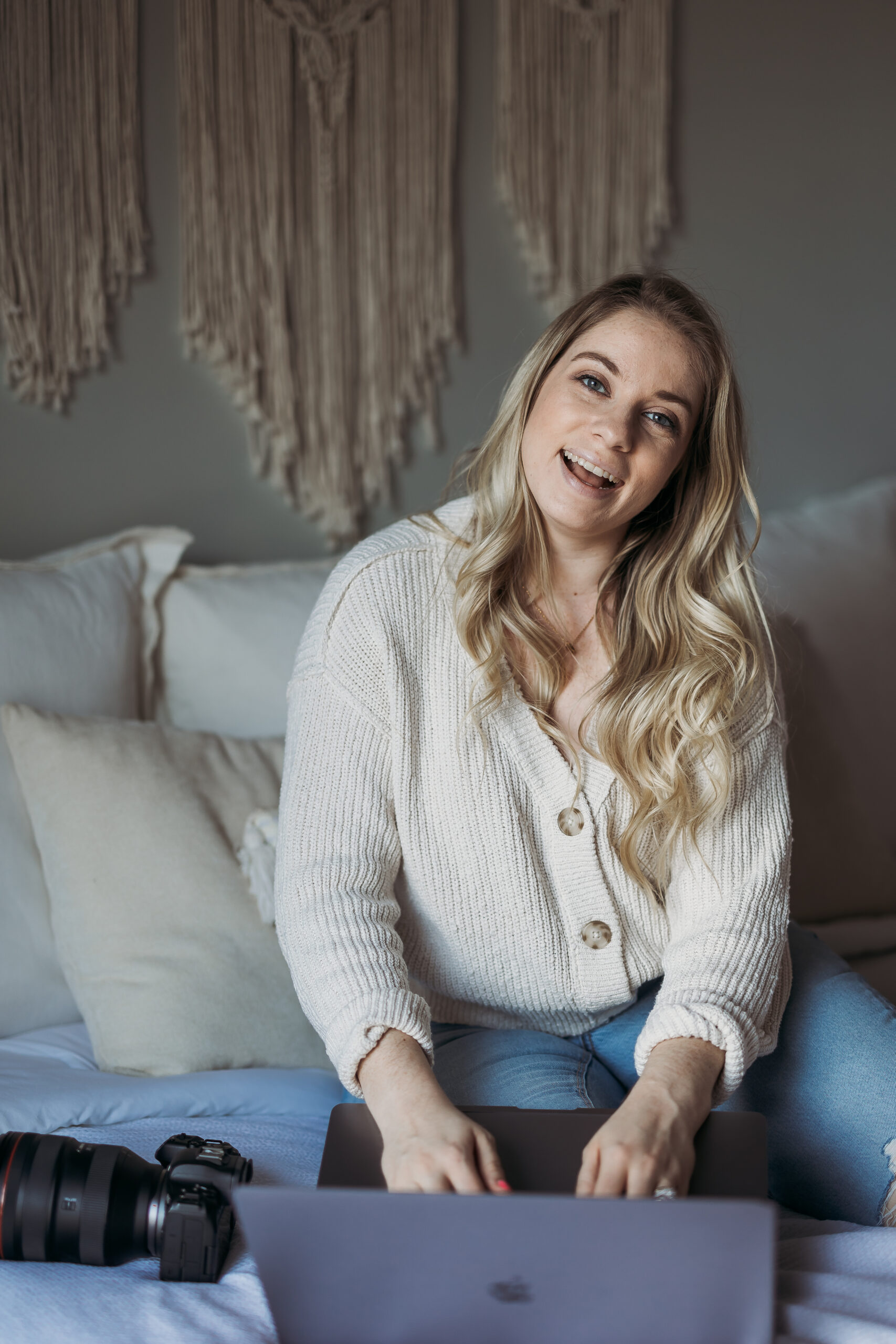Episode 004: The Cost of Running A Business
CODB | Business Expenses
I hope everyone has been crushing their to-do list this week! I know I’ve been. Launching a course has added about a hundred new things to my to-do list so to manage it all I’ve been scheduling out my days to focus on a specific part of my projects each day and it’s really been helping me get a lot of things crossed off my to-do list! I give myself a day dedicated to scheduling out my pins for the month, a day to update my website, a day to schedule Facebook posts, a day to work on course slides, and it’s been really helpful to keep me on task and showing me that I’m actually getting things done.
In this episode, I’m going to open up about all my secrets to figuring out what to charge for your sessions. Want to know the best part? They aren’t really secrets! There are so many resources on the internet to help you, but most of them involve a lot of math. It might seem like I’m just throwing one more thing out into the internet universe, but I have taken those other resources, and have made one that does all the annoying parts for you (AKA mathing).!
If you are utterly clueless and have absolutely no idea what to charge in your business, you need my Calculator! It’s a free tool that takes minimal effort to set up. I have formulas in the sheet that takes care of all the nitty-gritty math problems and leaves you with simple, clear answers on how much you need to charge in order to make the kind of money you want in this business.
Head over to the link in my shownotes to grab your own copy of the calculator. When you get the email with the link it will open up to a google sheet where you have to make a copy. Once you have your copy, just follow the easy steps I’ve laid out for you and you’ll be on your way to the profitable business of your dreams.
If you’ve been in the industry for any amount of time, you’ve probably heard about CODB. It’s much more than just a buzzword. It should be one of the primary guiding principles of your business. CODB stands for the cost of doing business and it takes into account your desired salary, your annual expenses, taxes, how much you want to actually work, along with a few other things, and then it spits out the minimum number you should be charging for each of your sessions.
Just for the sake of time, I’ll be referring to it as CODB instead of your cost of doing business.
Step 1 Figure out your expenses for the year
This is probably the most intimidating and overwhelming part of running your CODB (but I promise it will only go up from here). You don’t really realize how much money you spend on your business until you sit down and itemize each thing. All those memory cards and cords and props really start to add up. But being self-employed has its perks because there are so many things that you can write off!
In my own CODB calculator, I have hundreds of rows of write-offs. Tracking all of your expenses for the year is necessary for figuring out what to charge and to make sure you’re being compensated well for the time, effort, and money you’ve put into your business. For some of your expenses, you’ll need to plan ahead for the whole year and think about what you may have in the coming months, not just what you’ve already spent. Estimate your monthly gas consumption, the cost of tolls and passes, associated meals, etc.
REMEMBER that a budget (and this calculator) is a fluid document. It’s meant to adapt and change with you as your business’s needs change and grow. Refer back to it occasionally to make sure you’re still on target and adjust things as you see necessary.
Step 2 Be organized & creative
Learn from my mistakes and track your expenses monthly. Emphasis on the MONTHly. If you hire someone to do your taxes each year, I also suggest reaching out to them so they can guide you through the process of how they prefer your expenses to be tracked.
If you wait longer than a month to update your books each month, you’re going to regret it. It’s a humongous pain in the butt to sit down at the very beginning of the year and sift through your entire previous year’s expenses. You will lose your mind.
Like I said in step 2, It’s important to keep in mind that your CODB is a fluid number. If you use the calculator freebie, I recommend keeping those expenses up to date. As you add expenses, be sure to keep an eye on the cost of your sessions and make sure you’re still charging enough.
One of the perks of being self-employed or owning your own business? The things you get to write off for taxes. One thing I write off as a work-related expense is my stitch fix subscription. I request outfits that I can wear to photo sessions I’m shooting, outfits I’ll wear to wedding consults, and outfits I’d wear for my personal branding sessions. Stitch Fix is a great way to refresh your wardrobe with pieces you wouldn’t normally pick out for yourself. Stitch Fix really helps me when I’m in a rut with my outfits and find myself wearing the same leggings and t-shirt combo 4 times a week. If you use my referral link you’ll get $25 off your first order.
The way stitch fix works is you take a quiz that asks about your sizes, what types of clothes you need, what you don’t need, and what your style is. Each month you pay a $20 “styling fee” and a stylist will send you 5 pieces they’ve selected according to your questionnaire and any other requests you may have given them. You have a few days to try everything on, see if you like how it fits, and you just return the pieces you don’t want to keep in their pre-labeled return envelope and drop it off at the post office.
That $20 styling fee you paid for goes towards the subtotal of the items you decide to keep, and if you keep all 5 things, you get an extra 20% off. If there’s a piece that doesn’t fit you quite right and you need another size, just note that when you’re checking out, return it, and they’ll send you a different size. Did I mention that all the shipping is free?! I’ve been using stitch fix on and off for the last 4 years and have loved it. Be sure to sign up with my referral link to get $25 off your first month! You can find my link in the official show notes.
Step 3 Don’t Stress
As long as you’re charging according to your CODB, don’t over-stress it if you aren’t consistently booking the minimum # of sessions per week. For me, Jan and Feb are very slow months. I have maybe 5 sessions the entire month and I sometimes stress about making enough to pay my bills. Come the summer months like July & August, I have at least 7 sessions per week, so it makes up for the slower months, I just need to be conscious of how I’m managing my money to make sure it lasts.
Once I book up the minimum number of sessions I have to work each week, I increase my prices again due to the increase in demand. There’s a mathematical science behind it, but it’s also kind of a balancing act between charging low enough that people still book you, but also charging high enough that you aren’t being overworked. And when it comes to it, charging even higher so that once you are overworked, you’re still charging enough to make all the extra work worth it.
I started 2021 shooting 2 and $300 sessions and I ended the summer charging 5 and $700. I more than doubled what I was charging since the beginning of the year and it’s because the demand for photographers was so high.
By now your brain is probably killing you with all the things that have been added to your to-do list, but if you’re a photographer who has been pretty clueless about what to charge for your services, this is something that should be bumped to the top of your list.
It’s really important to keep your pricing competitive, but not so low that it undercuts the other photographers in your local market. Keep in mind though… just because I said you don’t need to stress it, doesn’t mean that clients willing to pay these prices are just going to fall into your lap. It’s still going to take some hustle and heart to put yourself out there and attract more of your ideal clients who will value your work.
Bonus step
Step 4 Figure out your office space
This is more of a hack for tax write-offs than actually figuring out your CODB but did you know that part of your rent or mortgage can be written off if you can determine the percentage of it that is related to your work area? I’ve added an extra tab in the calculator to do that math for you!
I believe in maximizing your taxable deductions and knowing the area of your office space is an important part of this. To figure it out, all you have to do is measure the length of 2 of your walls, plug them into the spots in the calculator, and I’ve got all the math figured out for you.
I just want to point out that all the information you’re putting into the calculator is totally private. Even though I made the original sheet, once you made your copy I don’t have any access to it.
Some other office-related write-offs… as photographers, we have an internet-based business so you don’t forget that you can write off your internet bill. You also need your phone, so that’s a write-off (if you’re on a plan with your spouse it’s your portion only). You can also write off a percentage of your electric bill in relation to your office space.
Now listen, I’m no tax expert, so you still want to consult with a professional, I just wanted to share the things I’ve picked up over the last few years being self-employed that have helped me make it through the years successfully.
And now, just to recap everything we talked about in this episode. When determining what you should charge for your sessions, the first thing you need to do is figure out your expenses for the year. To make sure your CODB remains accurate and up to date, you should check in with your calculator once a month to update any expenses that may have changed since the previous month. The last thing is to not stress! As long as you’re putting in the work, your business will succeed. And my bonus tip is to find out the area of your office space (so you can get more write-offs) and put it into the calculator.
Don’t forget to tune in next week to hear all about reels from my friend Corrin Jasinski! Is it okay to give you a homework assignment on here? If you want to get a feel for how awesome she is, go follow her on Instagram and watch some of her reels!
I know I’ve mentioned it 15 times, but make sure you grab your free copy of the CODB calculator. The link will be at the bottom of the show notes, you’ll put in your email, and your very own copy will be sent right to your inbox. Also, if you’re looking for a super beneficial write-off, consider signing up for Stitch Fix with my $25 off coupon. I love getting my personalized box each month because some of my favorite pieces in my closet have come from Stitch Fix.
– Links mentioned in this episode –
– Other Links –
Honeybook referral link (20% off your first year)
Flodesk referral link (50% off your first year)
Quickbooks referral link (50% off your first 3 months)
Be the first to hear when my beach course launches!
Disclosure: Some of the links in this post are affiliate links and if you go through them to make a purchase I will earn a small commission. Keep in mind that I will only ever share about companies that I truly believe in.
March 8, 2022
xoxo,
Elle
GRAB YOUR GUIDE
Take the guesswork out of preparing for a session with my in-depth, 23-page guide, that has tons of links and photo examples!
Session Prep & Style Guide
the free guide!


